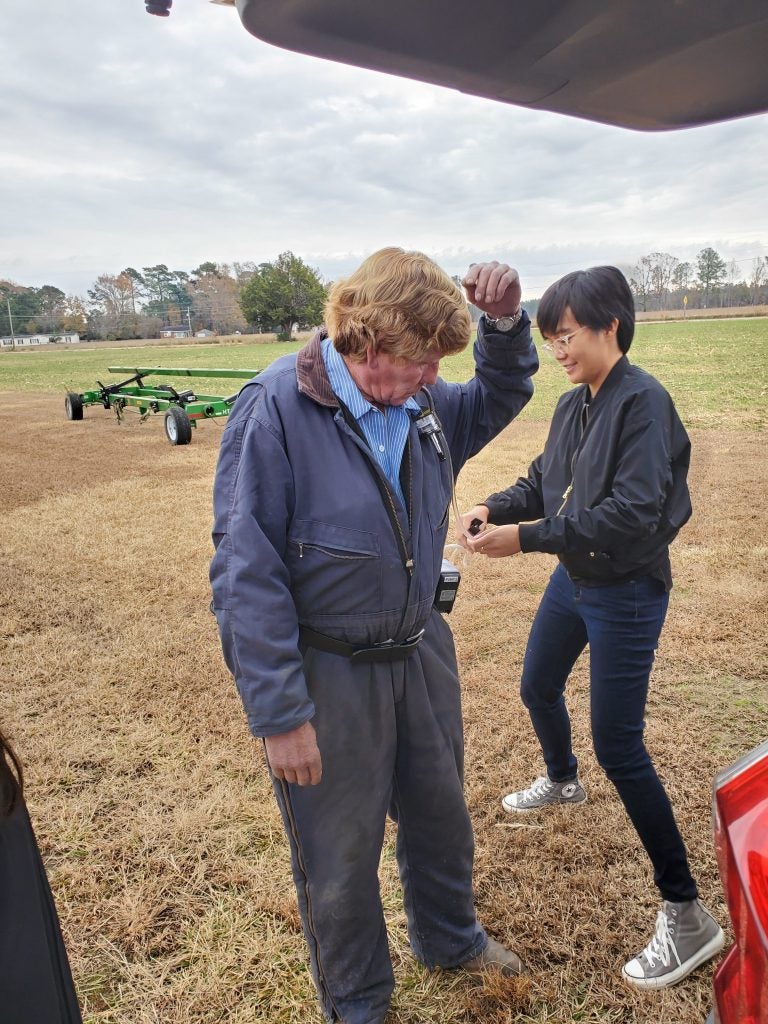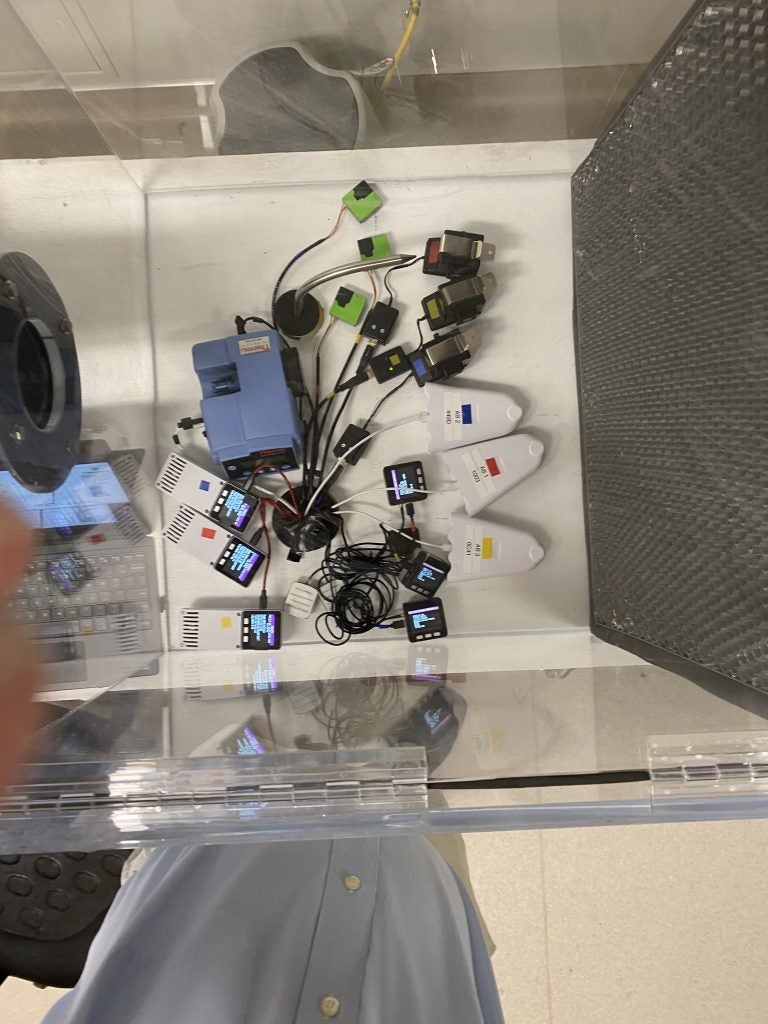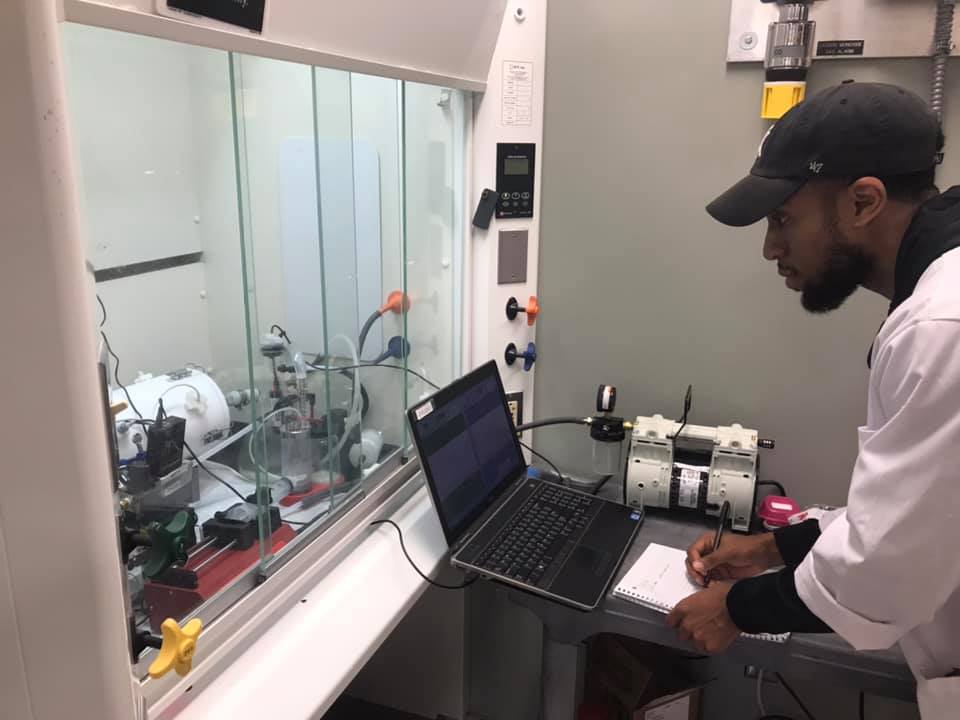PPE Innovation N95 Project

Due to the devastating impacts of the pandemic and the transmission of COVID-19 through the air, N95 respirators are in high demand by healthcare professionals for protection against the disease. The increased demand for N95 NIOSH-approved respirators has created a shortage and a necessity for finding an alternative respirator with similar efficiency. Due to these circumstances, filtration efficiency testing was established at ECU.
Team Science to Support Sustainable Animal Agriculture in North Carolina

Rural communities are affected by agricultural and industrial livestock operations. Populations residing in rural communities have an increased risk of exposure from livestock operations. Dr. Sousan’s team performed an air quality assessment at a swine lagoon to quantify the benefits of lagoon covers on the environment and the surrounding communities.
Low-cost Aerosol Sensor Assessment in Agricultural Settings

Farmworkers have the highest average working hours per week compared to other occupations, and outdoor workers are exposed to various hazards, including dust. Monitoring workers’ personal exposure during work hours would help introduce prevention methods that could reduce morbidity and mortality. Measuring personal exposure with low-cost dust sensors is an effective method, where these sensors can be calibrated to work similarly to the reference instruments.
Evaluation of low-cost optical particle counters for environmental and occupational exposure

Low-cost PM sensors, such as Optical Particle Counters (OPCs), are widely used devices for counting and sizing particles. The study evaluated the performance of low-cost OPCs in laboratory settings by comparing the results obtained from low-cost OPCs with the reference instruments at different concentrations for salt, dust, and oil particles that represent both environmental and occupational concentrations.
Laboratory Determination of Respirator Service Life

The study designed an exposure chamber for measuring the breakthrough times for respirator cartridges used for pesticide protection.